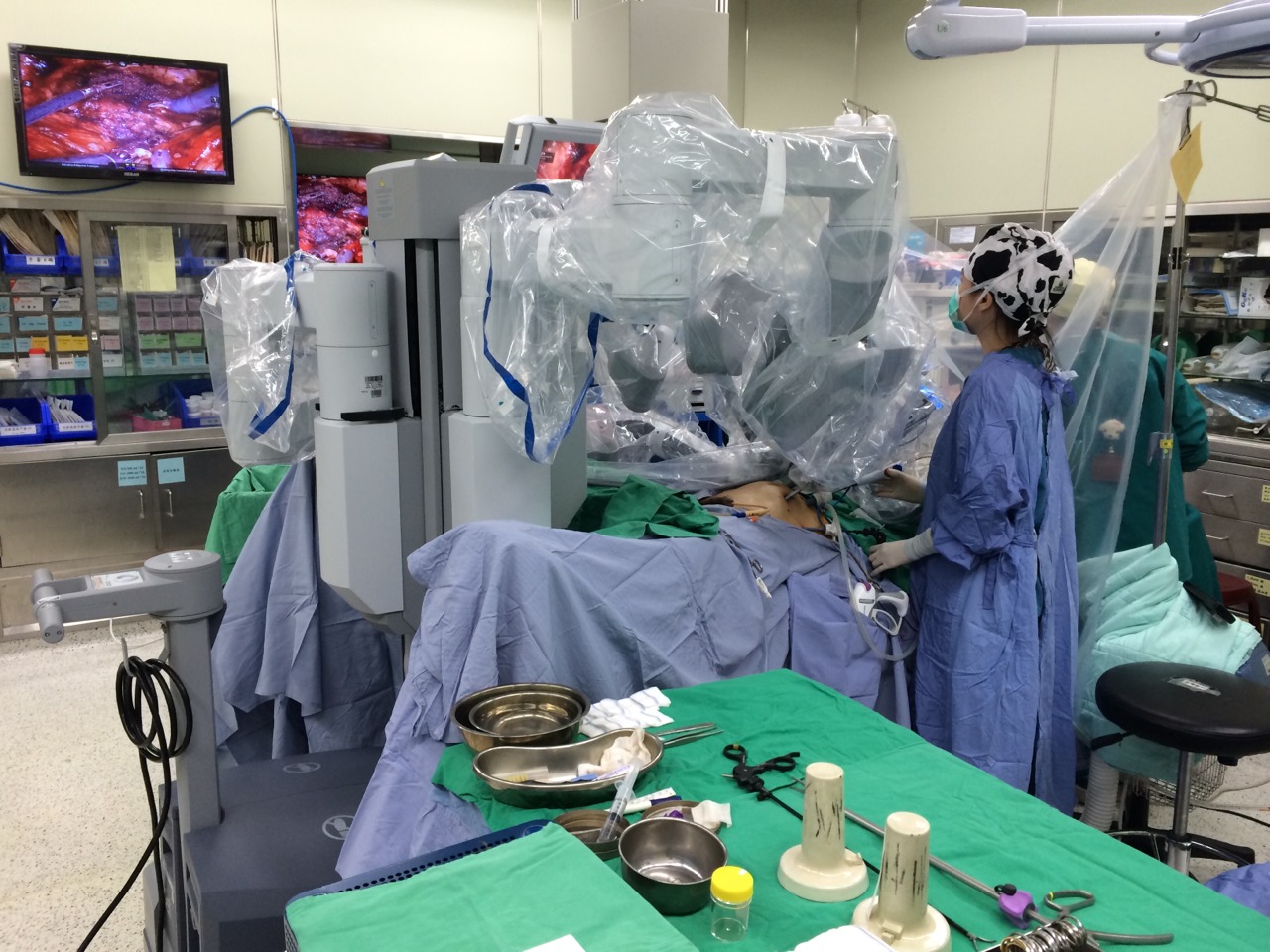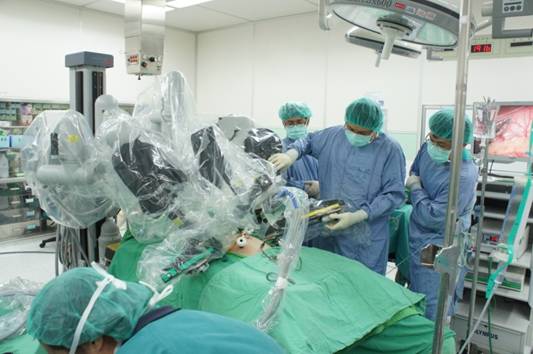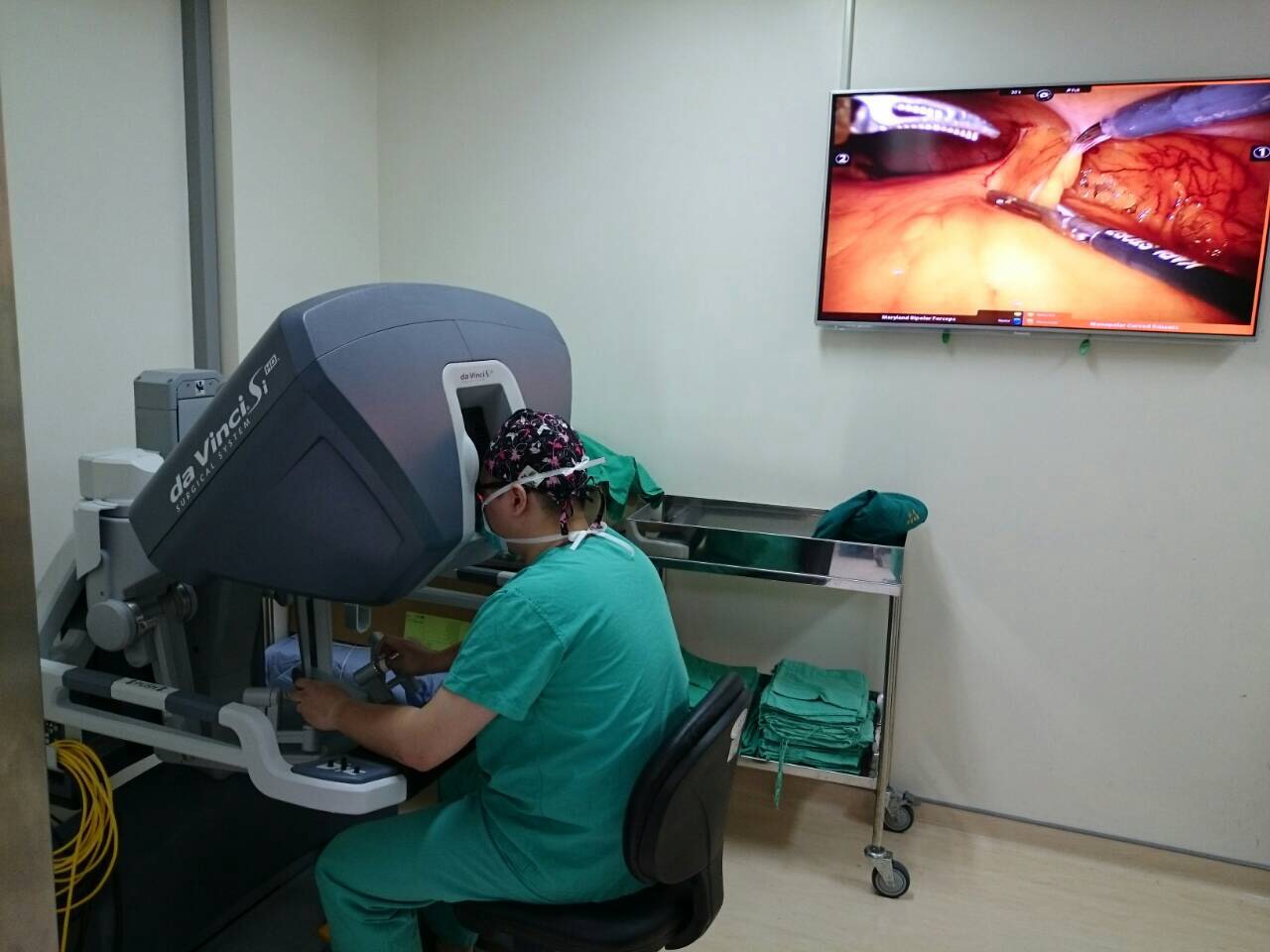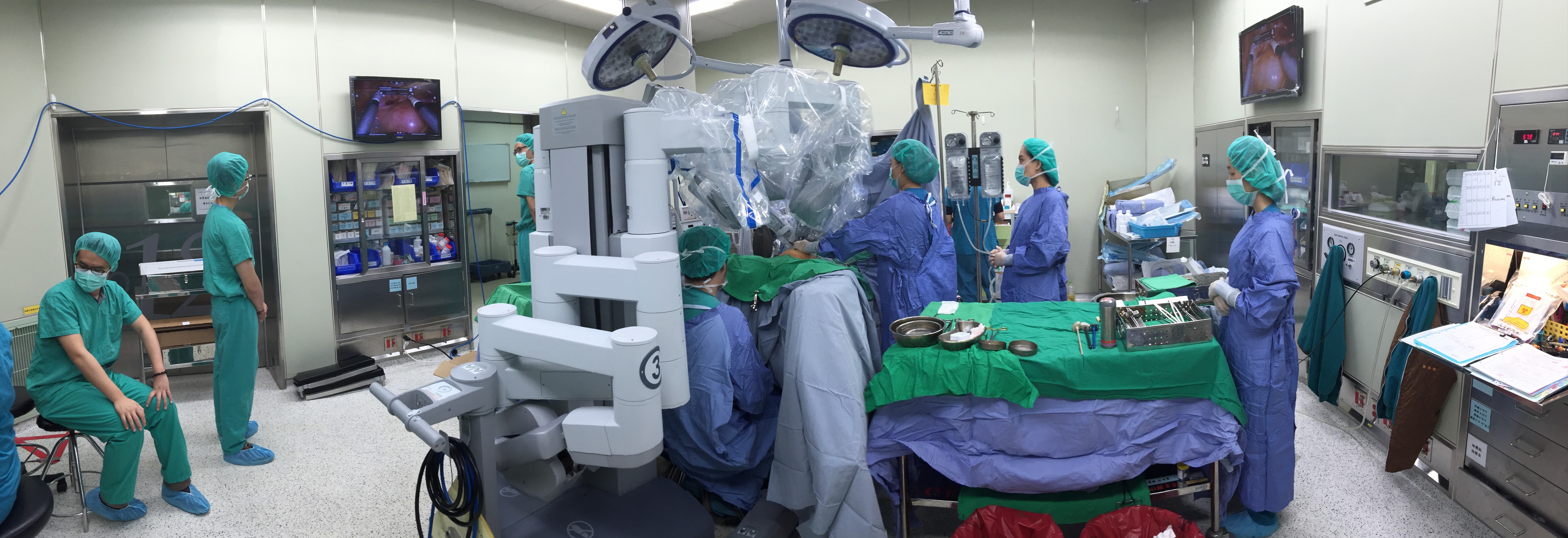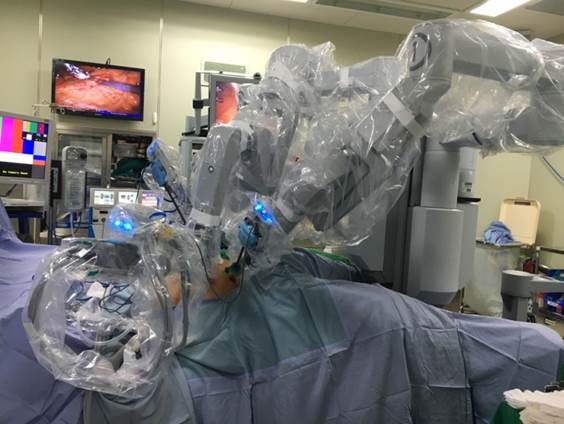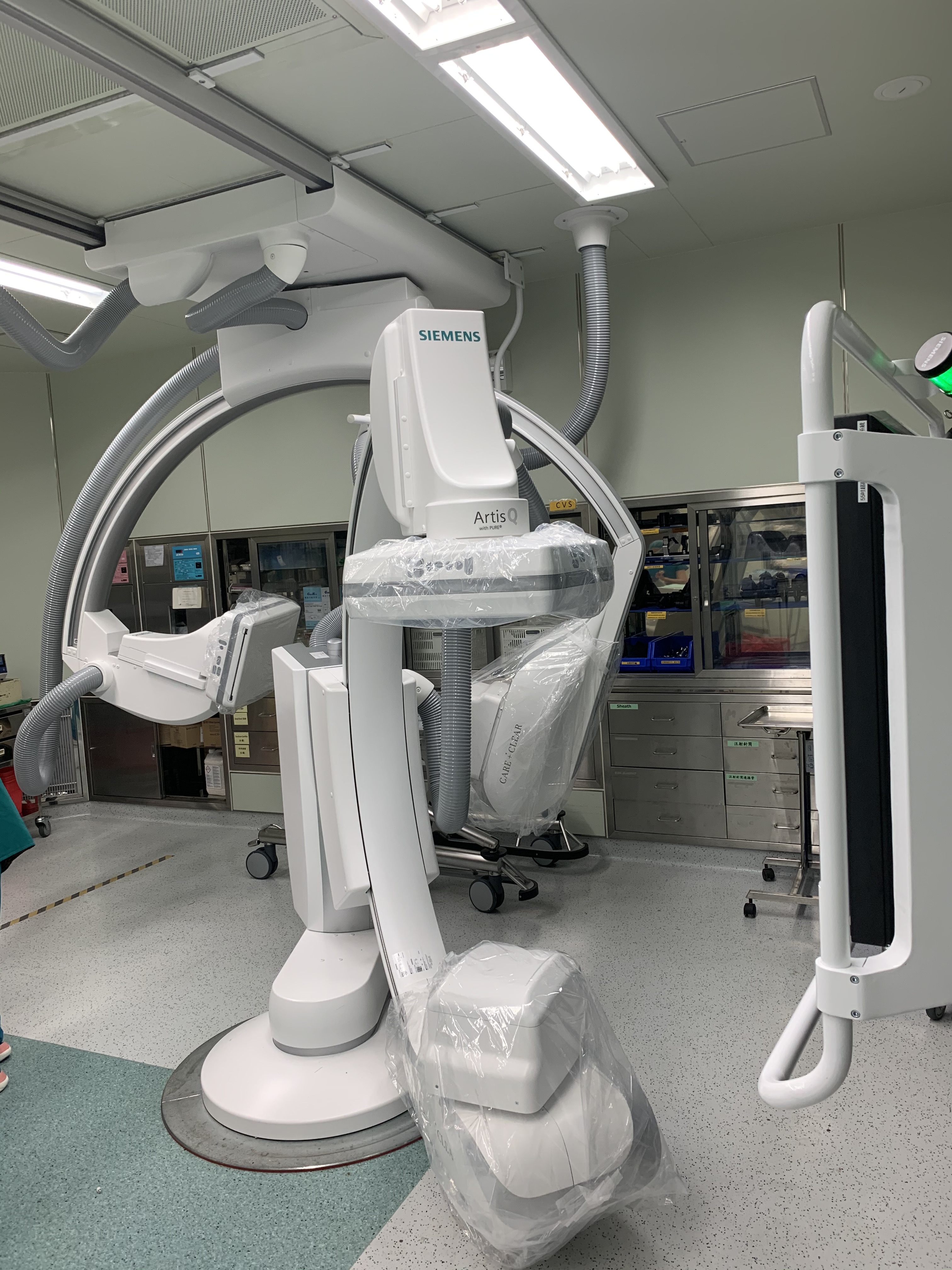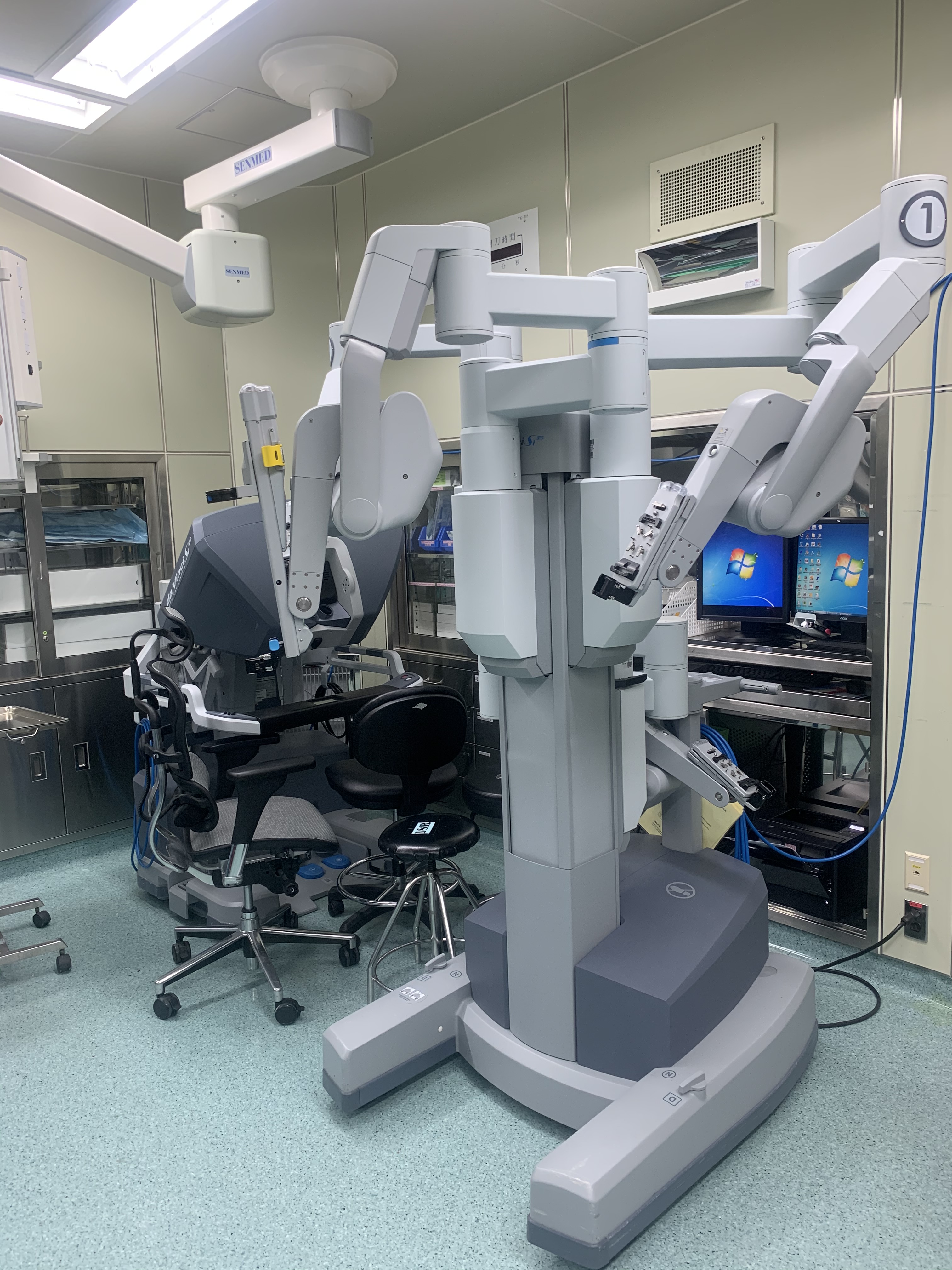Special Services and Feature
Gynecological Da Vinci Surgery-Traditional gynecological surgery will leave an obvious wound on the abdomen. With the maturity of minimally invasive surgery and the development of mechanical arms, the surgery can enter the delicate state and improve the quality of life after surgery. The stability of Da Vinci's arm is high, and the tip of the robot arm to perform surgery is less than 1 cm. It can cut and sew stably and accurately in a small space, with less bleeding, and can reduce damage to surrounding tissues. After a quick recovery. In addition, the Da Vinci arm system can provide a clear vision, reduce the damage to the surrounding tissues during the surgery, and make the surgery more precise. Da Vinci's arm can be used in most gynecological operations, especially endometrial cancer or cervical cancer. If the ovarian tumor is not too large, Da Vinci's arm can also be removed directly. In the past, the wounds of this type of surgery were large, the recovery time was long, and sequelae were easy to occur due to sticking. Da Vinci's arm can overcome the shortcomings of traditional surgery. Da Vinci surgery is also very helpful for most benign tumors. Common uterine fibroids, especially multiple fibroids, or fibroids that are not in a good position, can be sewn up with Da Vinci's arm and then sutured. The adhesion and pain will also be significantly improved in the future.
■Robotic surgery for benign tumor
1.Uterine myoma (the most common benign tumor)
2.Ovarian cyst
3.Uterine adenomyosis
4.Prolapse
5.Pelvic adhesion
■Robotic surgery for malignant tumor
1.Uterine cancer (including endometrial cancer and sarcoma, the most commen malignant tumor)
2.Ovarian cancer
3.Cervical cancer
Urological Da Vinci
Technology is always loyal to human nature, and surgical technology is constantly advancing toward the goal of smaller and more delicate wounds. The Da Vinci robotic arm has unprecedented precision and stability. The unique special equipment has 7 degrees of freedom control and a flexible rotation angle of 540 degrees. It can imitate human hands and perform rotation, grasping and pinching movements. The narrow surgical scope or the surgical procedures that require difficult skills to sew have better quality and effectiveness than traditional laparoscopy. With the assistance of the robotic arm, the damage to the surrounding tissue is less during the operation, the amount of bleeding is reduced, the wound is smaller, the operation time is shortened, and the recovery after surgery is faster.The urology department of our hospital has rich experience in Da Vinci robotic arm surgery, and has performed more than 100 cases since 2014. The treatment includes radical prostatectomy, partial kidney resection, total renal ureterectomy, and radical cystectomy Combining artificial bladder reconstruction, single-hole Da Vinci surgery, renal pelvis reconstruction and stone removal, adrenalectomy and other difficult and precise treatments. In addition, in terms of single-hole da Vinci, the urology team of our hospital has more skilled technology, which is a great boon for patients.
■Da Vinci Robotic Assisted Surgery
1.Prostate cancer
2.Ureteral tumor
General Surgery Da Vinci
Laparoscopic surgery is used in gallbladder, large intestine, appendix, stomach, liver, pancreas, thyroid and other parts of general abdominal surgical diseases. After the introduction of the robotic arm in our hospital, the flexibility of the robotic arm and the accuracy of the imaging system can deeply process invisible nerves and blood vessels. The deputy director of the hospital, Huang Mingde, said that "single-hole Da Vinci surgery" is an advanced version of Da Vinci surgery. In general, the robotic multi-hole surgery requires 3 small holes in the abdomen, each hole is about 1 cm long to allow 3 The robot arm performs the operation, but the "single hole Da Vinci operation" is to open only a small hole, allowing three robot arms to operate in the abdominal cavity at the same time, which is very difficult. From traditional laparotomy to laparoscopy, to advanced robotic arm assisted minimally invasive surgery, the main purpose is to reduce the patient's postoperative pain, and the advanced technology is for the patient's feeling,
hoping to be synchronized Better quality.
■Robotic colorectal surgery
1.Colorectal tumor and cancer.
2.Colon diverticulosis
■Minimally invasive surgery
1.Robotic mastectomy
■Robotic hepatectomy
1. Hepatic tumor
Otolaryngology Surgery Da Vinci
Da Vinci Surgery Minimally Invasive Medicine: The robot arm assists in the precise operation of small wounds. Because of the precise movements, it can achieve the advantages of minimally invasive and reduced surgical risk. It can be used in the fields of oral cancer, hypopharyngeal tumor resection, thyroid disease and sleep surgery.
■Transoral robotic surgery to remove oropharyngeal tumors.
1.Benign or malignant tumor of Oropharynx.(Oral contracture is not suitable for those who are unable to open.)
■Oral Robot Sleep Breathing Surgery.
1.Moderately severe sleep apnea.(Oral contracture is not suitable for those who are unable to open.)
Thoracic surgery Surgery Da Vinci
Da Vinci (robot arm) surgery is mainly used to treat lung cancer, esophageal cancer and thymus diseases.
Colorectal Surgery Da Vinci
Due to the busy work of the Chinese people and the gradually westernization of the diet structure, the diseases of the colorectal and anus have increased year by year, and patients with colorectal cancer have become one of the top ten cancers of the Chinese people. In order to provide better and better services to these patients, Shuanghe Hospital Colorectal Surgery provides a full range of colorectal and anal diseases examination and treatment.
■Development focus:
1.Anus-preserving rectal cancer resection
2.Da Vinci Robotic Arm Surgery
3.Single wound endoscopy or Da Vinci robotic arm surgery
4.Laparoscopic colorectal resection
5.Hemorrhoids and minimally invasive surgery
6.Colonoscopy and treatment
■Medical equipment:
1.Endoscopic surgery equipment
2.Da Vinci robotic surgery equipment
3.Anorectal pressure examination instrument
■Work content:
1.Anal diseases: hemorrhoids, anal entanglement, anal abscess, anal fissure, anal stenosis, and anal incontinence.2.Colorectal diseases: Benign or malignant colorectal tumors, anorectal abscess, inflammatory bowel disease, rectal vaginal tube, etc.
■Da Vinci Robotic Arm Colorectal Surgery
The Da Vinci robotic arm (pictured) operates the robotic arm through the imaging system to perform surgery in the abdominal cavity. The image is a 3D stereoscopic imaging system, which has clearer imaging results than traditional laparoscopic images. In addition, its robotic arm's range of motion is quite flexible. Do 540 degree rotation, and the robot arm will not have hand tremor. It is especially suitable for small spaces such as pelvic rectal surgery and large-scale lymph node removal surgery. Da Vinci's robotic arm will have better surgical results if it is combined with minimally invasive rectal resection and anal preservation surgery for low rectal cancer.
Cardiovascular Surgery Da Vinci
The Department of Cardiovascular Surgery was established in October 2008. The first director is Dr. Hu Poyuan, including Lin Junhua, Weng Qifeng, Li Zhongyi and other doctors who have also joined the service. Since the first open-heart surgery on February 12, 2009, by the end of 2017, there have been more than 700 operations, and more than 8,000 various vascular operations. The current members include Director Lin Zhengxin, Dr. Ke Yucheng, Fu Zhiying, the cardiopulmonary bypass master, Liang Meiling, Gao Yuchun, a specialist nurse, and Jialing Hong.
The undergraduate works closely with other cardiovascular related specialties and is committed to providing a full range of medical treatment for cardiovascular patients, including hemodialysis vascular surgery, peripheral artery surgery, integrated treatment of varicose veins, aortic surgery and stent placement, heart valve repair and Replacement surgery, heart beating coronary artery bypass surgery, Da Vinci robotic arm assisted minimally invasive heart surgery, surgical treatment of heart failure, etc., aim to care for the heart and blood vessel health of patients in Zhongyonghe area.
■Da Vinci robotic arm assisted minimally invasive heart surgery
